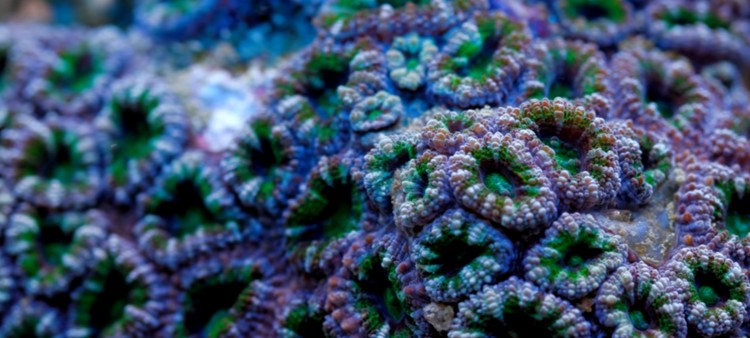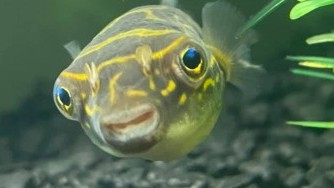Top 6 Inverts That You Will Regret!
- Aug 23, 2021
- Anshika Mishra
- 261 0 0

In the right tank, you can keep pretty much any invert, but for the vast majority of us who want a general reef, there are certain restrictions that you need to be aware of
Arrow Crab
When you start looking at marine ships, the Arrow crab stands out as one of the freakiest invests. They look like something out f the world, and the thought of having something like that in your tank is excellent. They are also known to eat bristle ours, which some new reef keepers won't think of as a pest rather than a free clean-up crew. But that is never the case, as they grow huge and risk your other cleanup crew. As they may shrimp snails or even small fish. They are also known for eating corals like Zoas and Mushrooms.
Though there is nothing like an arrow crab, you can get the Hawain Hermit crab. They are excellent scavengers and have fabulous strippy red legs. The only downside is that they don't always care habit well with snails as they will kill if their shell looks like a good fit for a new home. Therefore, you must not eep then with snails.
Sea Hair
There is a fair chance that you will have an outbreak of green hair algae at some point in your saltwater career. In such cases, Sea Hair is often suggested as a great green hair algae predator. But they can be hit and miss at eating algae. So even if they do much through the stuff, you will need to remove them from your tank when they are done, or they will starve to death.
The great news is that the Blue Tuxedo Urchin is a genuinely epic algae eater. When it comes to battling algae, your first call should be to get your water parameters in check. But they can also be a great help. They also eat various other types of algae, and they don't get massive, so they are an excellent long-term option. They are also famous for eating Caroline off the corals.
Camel Shrimp
When you see these guys in the shop, they rock back and forth like they are dancing. They are also great looking so they will easily entice you into buying one. But they have a reputation for eating certain types of corals and Anemones, and getting them out of your tank once they have grown rogue isn't easy.
If you want to keep cleaner shrimp, you should probably think twice about getting Fire or boxer shrimp which can be aggressive towards the other shrimps.
Instead, you can get the Cleaner shrimp, and they are pretty much the most peaceful and reef-safe shrimp around. They look fantastic, and they will set up a cleaning station where you fish can go to get dead skin and maybe external parasites nibbled off. If you get one of these, be aware they molt. So, if you think yours have died, take a closer look to see if it's just shed its skin.
The second alternative is the pastel shrimp. Then, if you want a pair of appropriate Goby, they'll buddy up and look out for each other. It is a mesmerizing symbiotic relationship.
Starfish
This does not apply to all the Stars, but ones like the Coral eating Chocolate chip Starfish. The blue Linkia, in particular, is an absolute beauty, but they do not do good in aquariums, especially anything other than a very well-established aquarium. Coral eating Chocolate chip Starfish is a liability in a reef and comes with a reputation for eating corals.
The obvious alternative is the Bnaded Brittle Star. They are a fantastic detectable, which makes them a significant part of your cleanup crew. However, you need to be careful with Brittle Stars as some are dangerous to the slow-moving fish. So, make sure you are not getting one of the risky ones. Also, they are nocturnal, so don't expect to see much of them after you introduce them.
Mexican Turbo Snails
They are a great algae eater, and they even chew through green hair algae. But they are on the list because they do not live too long, and they don't readily breed. The plus side is that their shells are pretty cool, so they make an excellent base when encrusting corals to cover when they die.
The alternative is the Banded Trochus Snails. They are fantastic at keeping algae at bay before they have a chance to take hold, which makes them an essential member of your cleanup crew. They also breed like rats, so you will always have a solid supply once you introduce them in your aquarium.
Red Buble Tip Anemone
Clownfish swimming around an Anemonieis is an iconic look, and the thought of recreating that in your own home is enticing. But if you want to keep one, you will have to put some serious planning into it and be prepared to make sacrifices.
They are entirely unsuitable for a new tank, and you can forget about keeping one for at least the first six months as they won't tolerate the chemistry changes a young tank goes through. So, if you then put them in a lovely established tank with loads or corals but don't put them entirely in the right spot, they will walk right across your work until they find the right place. They are stinging your corals as they go. They can also grow big and multiply by splitting, so you can quickly end up with half a dozen in your tank in no time.
Instead, you can try Hammer or Torch corals, Zoas, or any coral with long tentacles that can provide a similar home to your Clownfish. So, you still get the interaction with the clowns, as well as their wavy movement. However, Clowns can irritate the corals that host them if you are unlucky. Rock Flower Anemones is another great option; they are much more complex and come in stunning colors, and while they are too small for clownfish, they play host to shrimps, which gives you the excuse to get a pretty coll inverts in your tank.
Happy Reefing!





About author